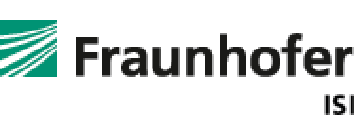Overview
Final energy consumption in Poland was increasing by 1.3%/year from 2000 reaching 71.7 Mtoe in 2022 (at normal climate). The biggest consumer was transport sector, which share amounted to 33% in 2022, followed by households with 30% share. Energy use of third biggest consumer - industry - decreased by around 0.4%/year during given period and accounted for 21% of final energy consumption in 2022. Service sector, due to a rapid growth of consumption (2.2%/year) increased its share to 12% of total final consumption. Consumption in agriculture decreased by 1.5%/year and the share of this sector amounted to 4.6% in 2022.
Figure 1: Final energy consumption by sector (with climatic corrections)
Source: ODYSSEEIn 2022, energy efficiency for final consumers had improved by 30% since 2000, averaging a yearly improvement of 1.6%. The most notable progress was seen in the industrial sector, which achieved a 58% increase in efficiency, equating to an annual improvement of 3.8%. Household energy efficiency improved by 21% compared to 2000, with a yearly improvement rate of 1.1%. In the transport sector, energy efficiency rose by 16% over the same period, with an annual improvement of 0.8%. However, the services sector saw only a modest 3% increase in energy efficiency since 2000, translating to an annual improvement of just 0.1%.
Figure 2: Technical Energy Efficiency Index
Source: ODYSSEETable 1: Sample of cross-cutting measures
| Measures | NECP measures | Description | Expected savings, impact evaluation | More information available |
|---|---|---|---|---|
| System of white certificates - Energy efficiency Act | Yes | The Energy Efficiency Act includes provisions to introduce a white certificate scheme to stimulate energy efficiency measures across the economy. The white certificate system operates in three areas, called categories of energy efficiency measures: 1) Increased energy savings by end users. 2) Increasing energy savings by energy producers from equipment used for their production needs. 3) Reducing losses of electricity, heat or natural gas in transmission or distribution. | 29.29 PJ | Link |
| European funds - operational programmes in the financial perspective 2021-2027 | Yes | Operational programmes under the 2021-2027 Financial Perspectives aim to implement the assumptions and objectives of the National Energy and Climate Plan for 2021-2030 in the following areas: energy security; internal energy market; energy efficiency; decarbonisation; research, innovation and competitiveness. | 26.03 PJ | Link |
| Energy for the countryside | Yes | The programme aims to increase the use of renewable energy sources in rural and urban communities. The main beneficiaries of the programme are energy cooperatives (existing and new) and farmers. | 14.58 PJ | Link |
Buildings
Household heating energy consumption per square meter, adjusted for climate, decreased by an average of 0.9% per year, reaching 13.08 koe/m² in 2022—a reduction of 18% compared to 2000.
In 2022, the energy consumption per dwelling for water heating was 0.27 toe, reflecting a 2% decrease compared to 2000 and an annual reduction rate of 0.1%. Energy consumption for cooking was 0.14 toe, marking a 10% decrease since 2000 and a 0.5% annual reduction. However, energy use for lighting and electrical appliances rose to 0.15 toe, an increase of 22% compared to 2000, with an annual growth rate of 0.9%.
Figure 3: Energy consumption of household space heating per m2 (with climatic corrections)
Source: ODYSSEEFigure 4: Energy consumption per dwelling by end-use (except space heating)
Source: ODYSSEEIn 2022, energy consumption in households amounted to 22.2 Mtoe, an increase of 29% compared to 2000. In the period 2000-2022, energy savings reduced household energy consumption by 4.9 Mtoe, whereas climate increased energy consumption in households by 1.7 Mtoe, more dwellings by 4.3 Mtoe, larger homes by 2.6 Mtoe, and other factors by 1.3 Mtoe.
Figure 5: Main drivers of the energy consumption variation in households
Source: ODYSSEEIn 2022, energy consumption per employee in the service sector increased by 12% compared to 2000, corresponding to an increase of 0.5%/year.
In 2022, electricity consumption per employee increased by 32% compared to 2000, an increase of 1.3%/year.
Figure 6: Energy and electricity consumption per employee in services (with climatic corrections)
Source: ODYSSEETable 2: Sample of policies and measures implemented in the building sector
| Measures | NECP measures | Description | Expected savings, impact evaluation | More information available |
|---|---|---|---|---|
| Thermo-modernization tax relief | Yes | The scheme is aimed at owners or co-owners of single-family homes. The relief can be used if you incur expenses related to the thermal modernisation of the house. | 24.82 PJ | Link |
| Warm Housing | Yes | Improve air quality and reduce dust and greenhouse gas emissions by replacing heat sources and improving energy efficiency in multi-family dwellings. | 18.56 PJ | Link |
| My Heat | Yes | The programme aims to support the development of individual heating and prosumer energy development in the field of air, water and ground source heat pumps in new single-family homes. | 8.47 PJ | Link |
Transport
In 2022, the share of passenger cars in energy consumption in transport amounted to 51%, an increase of 1 percentage points compared to 2000, and the share of trucks reached 42.5% (a significant increase of 8.9 percentage points compared to 2000). The share of other modes was small and decreased.
Figure 7: Transport energy consumption by mode
Source: ODYSSEEIn 2022, the share of passenger cars in inland passenger traffic amounted to 81.5%, a significant increase of 21.8 percentage points compared to 2000. The share of buses and trains made up 8.9% and 9.6% respectively – significant decreases in share compared to 2000 by 18.2 and 3.6 percentage points respectively.
Figure 8: Modal split of inland passenger traffic
Source: ODYSSEEIn 2022, the share of road transport in inland freight traffic reached 76.4%, a significant increase of 26.8 percentage points compared to 2000. The share of rail transport was 23.6%, a significant decrease of 25.7 percentage points compared to 2000. Water transport of goods remained marginal.
Figure 9: Modal split of inland freight traffic
Source: ODYSSEEEnergy consumption in transport has increased 2.5 times since 2000, the most important factor being the increase in passenger and freight transport, which contributed to an increase in consumption of 8.5 Mtoe. The modal shift from public transport to private cars for passengers and from trains to road for goods increased consumption by 3.6 Mtoe and other factors by a further 4.4 Mtoe. Energy savings (2.2 Mtoe) partially offset the impact of these effects.
Figure 10: Main drivers of the energy consumption variation in transport
Source: ODYSSEETable 3: Sample of policies and measures implemented in the transport sector
| Measures | NECP measures | Description | Expected savings, impact evaluation | More information available |
|---|---|---|---|---|
| Green Public Transport (Phase 1) | No | The aim of the programme is to avoid air pollutant emissions by co-financing projects aimed at reducing the use of emission fuels in transport. | 7.78 PJ | Link |
| Development of collective public transport in cities | Yes | Support for low-emission public transport in cities from the EU Cohesion Fund will be continued under the Operational Program Infrastructure and Environment in the period 2021-2027. | 7.70 PJ | Link |
| My electric vehicle | Yes | The aim of the programme is to avoidThe programme provides for the possibility of co-financing projects for the purchase of new vehicles of category M1 that use only electricity generated by connection to an external electricity source or electricity generated by hydrogen in fuel cells installed in the vehicle, or only an engine whose operating cycle does not lead to the emission of greenhouse gases or other substances covered by the greenhouse gas emission management system. air pollution emissions by co-financing projects aimed at reducing fuel consumption in transport. | 7.36 PJ | Link |
Industry
The share of the three most energy-consuming industries (paper and pulp, chemicals and non-metallic) increased from 46% in 2000 to 49% in 2022. The final energy consumption of non-metallic industry increased by 15% compared to 2000, and paper and pulp industry by 42%, whereas the chemical industry decreased by 29%.
Figure 11: Final energy consumption of industry by branch
Source: ODYSSEEBetween 2000 and 2022, there was a significant decrease in energy consumption per tonne of steel, paper and cement production, i.e. there was a significant improvement in energy efficiency. In 2022, the unit energy consumption of steel decreased by 42% compared to 2000, the unit consumption of paper decreased by 42%, and the unit consumption cement decreased by 31%.
Figure 12: Unit consumption of energy‐intensive products (toe/t)
Source: ODYSSEEGrowth of activity in industrial branches contributed to increase in energy consumption by 15 Mtoe since 2000. On the opposite energy savings (13.7 Mtoe) and structural changes towards less energy intensive production (2.4 Mtoe) led to decrease the consumption. As a result, energy consumption of industry has decreased by 0.4%/year since 2000.
Figure 13: Main drivers of the energy consumption variation in industry
Source: ODYSSEETable 4: Sample of policies and measures implemented in the industry sector
| Measures | NECP measures | Description | Expected savings, impact evaluation | More information available |
|---|---|---|---|---|
| Cogeneration for Energy and Industry | Yes | The programme aims to promote the use of high-efficiency cogeneration for industry. | 151.2 PJ | Link |
| RES - heat source for heating | Yes | Support for the generation of heat energy from renewable sources (heat pumps, solar collectors, geothermal energy). The investment may also include a connection to the heating network owned by the beneficiary and an energy storage facility. | 35 PJ | Link |
| County heating system | Yes | The programme aims to reduce the negative environmental impact of district heating companies, including improving air quality, by supporting investment projects. | 6.60 PJ | Link |





